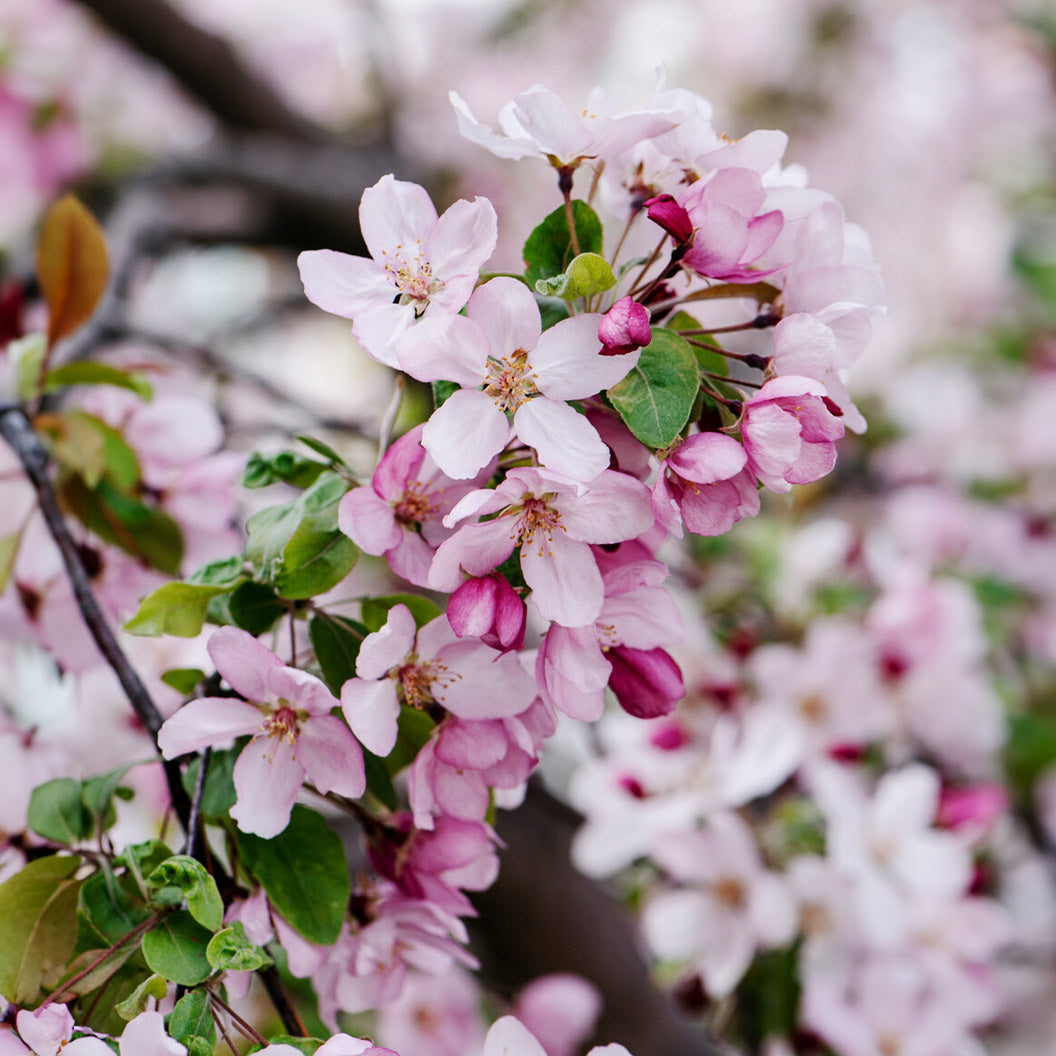The Crabapple Tree With Four-Season Interest
The Indian Summer Crabapple is known for its single flowers that bloom heavily, covering the tree in mid-spring. The deep red buds change into many different hues of pink flowers, making every tree unique. The leaves are a purplish color in the spring before turning to medium green in the summer and orange-red in the fall.
The Indian Summer Crabapple is popular amongst birds and butterflies, bringing them in first with their flowers and then bright red fruit in the fall. While birds love the fruit, gardeners use the fruit for canning or making jellies.
The Indian Summer is a crabapple variety notable for its disease resistance. It’s extremely low-maintenance, offering a compact ornamental tree for those who want an easy-to-care-for garden or those with less than favorable conditions.
Add the Indian Summer Crabapple to your yard this season and order online today!
Planting & Care
1. Planting: Plant your Indian Summer Crabapple in a location that receives full sun and has well-draining soil. Ensure there is enough room for the tree's size once it reaches maturity.
Dig a hole twice the size of the tree’s root ball and mix in some compost. Plant your tree, holding the tree trunk straight as you backfill the soil. Add a layer of mulch to conserve moisture, keeping the mulch from directly touching the tree’s trunk.
2. Watering: Crabapple trees have average watering needs. Water frequently in the tree’s first year. Once it’s established, water only during periods of drought.
3. Fertilizing: Add a well-balanced fertilizer for trees and shrubs once a year in early spring.
4. Pruning: Crabapple trees require very little pruning. Avoid pruning in early spring. Remove any diseased or dead branches and any additional branches for shaping, preferably in late winter.
5. Pollination: Crabapple trees are self-fertile. No additional trees are needed to produce fruit, though additional apple or crabapple trees will increase fruiting.




Comment